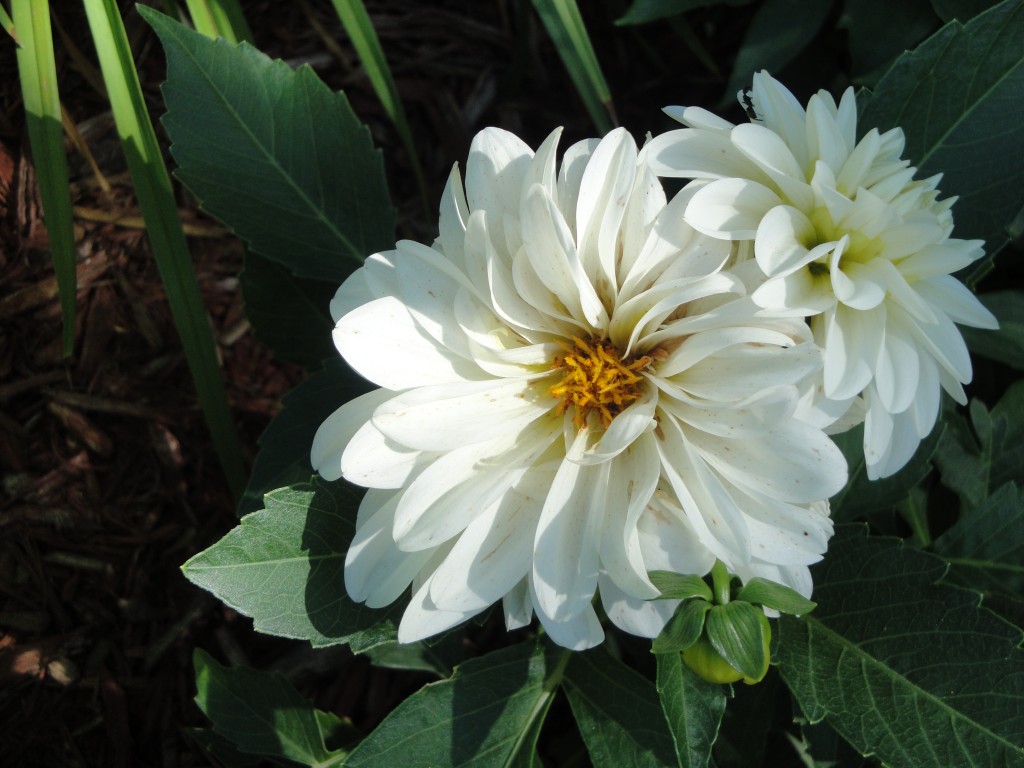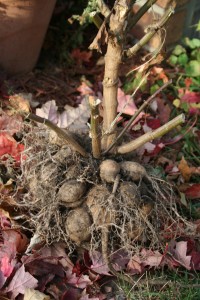How to Dig and Divide Dahlia Tubers

Dahlias are native to Mexico, but these stunning tropical plants shine in the northern garden, too. A member of the aster family, dahlias look a bit like zinnias, chrysanthemums and other aster-like plants. They come in a wide range of forms, from small, single blooms to enormous, so-called dinner-plate dahlias, many of which are more than 10 inches across.
Dahlias can be purchased as tubers and planted in the spring, or they can be started from seed indoors. This past season, I had good luck growing dahlias from seed. They were started indoors in March and planted outside in full sun and well-drained soil in May. They grew to about 3 feet tall and flowered profusely all summer.

Since they did so well, I decided to dig and divide the tubers — something I have not done before. We’ve had several nights of frost here and the dahlia foliage had all died back, which is the time to dig them up. Digging is relatively easy. Cut the plant down to about 6 inches on the main stem. Then, take a garden fork and loosen the soil around the plant, about 8 inches away from the stem. The soil here is rather dry, so I had no trouble loosening the soil and then tugging the stem with tubers attached out. It’s a good idea to rinse off the clusters of tubers to improve your ability to see where the eyes are when you divide the clump. You should also let the tubers dry in an area that is above freezing for a few days. (Mine are in the garage.) If you want to wait until spring to divide the dahlias, you can simply store the clump in a paper bag in an area that stays above freezing, but is not too warm.
To divide dahlia tubers, you need to look for eyes on each individual tuber. Without an eye, it will not grow a plant next year. Some of my tubers do not have eyes. Once you find a tuber with eyes, you need to cut the tuber out from the main plant. Here’s a great video on how the entire process works, including some information on where to look for the eyes.
Divided tubers can be stored in the same way as those that are not divided — let them dry, then wrap them in newspaper and store in a paper bag in a cool but not freezing place.
Does this seem like more work than you want to do? MSHS sells dahlias and other bulbs for very reasonable prices at the Minnesota Home and Patio Show and the Minneapolis Home and Garden Show every spring.
For More Information
For more information on care of dahlias, check out our plant profile from January.
And, for a fun diversion, enjoy these photos of frogs on dahlias posted on the Minnesota Dahlia Society web page.
The University of Minnesota Extension Service has an informative article on dahlias from its Yard and Garden website.
—Mary Lahr Schier

One Comment
-
Pingback: Plant Profile: Begonias - Minnesota State Horticultural Society
Back to Blog